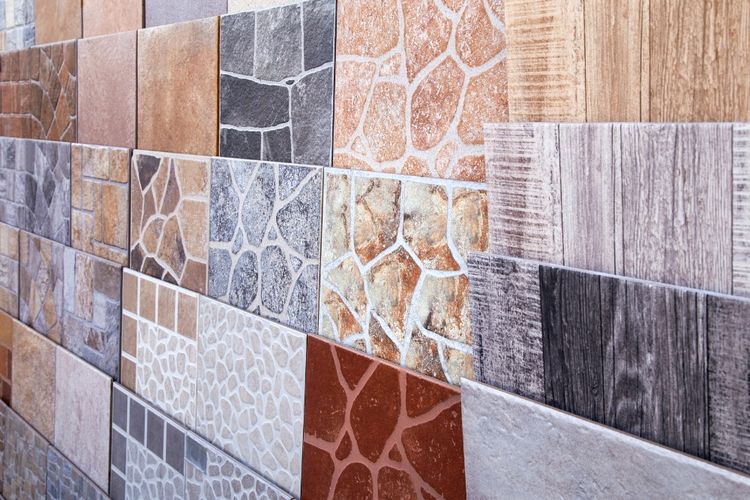Transform Your Space with Faux Stone Panels: The Ultimate Guide to Installation and Materials
Faux stone wall panels have revolutionized interior and exterior design, offering a cost-effective alternative to natural stone that doesn't compromise on aesthetic appeal. These versatile panels can dramatically transform boring walls into stunning focal points, adding texture, depth, and character to any space. Whether you're looking to create a rustic accent wall in your living room or upgrade your home's exterior, faux stone panels provide an accessible solution that combines beauty with practicality.

What Are Faux Stone Panels and How Do They Transform Spaces?
Faux stone panels are manufactured products designed to mimic the appearance of natural stone while offering significant advantages in terms of weight, cost, and installation. Made from materials like polyurethane, fiberglass reinforced concrete, or high-density polyethylene, these panels replicate various stone styles including stacked stone, ledgestone, river rock, and fieldstone. The transformation they create can be remarkable - turning plain drywall into what appears to be a carefully constructed stone wall in a matter of hours rather than days.
The visual impact of these panels extends beyond mere decoration. They can visually expand small spaces, add warmth to modern interiors, create separation between functional areas, and even boost property value. In commercial settings, faux stone walls can establish brand identity and create memorable environments that leave lasting impressions on customers.
How Do Faux Stone Materials Compare to Natural Stone?
When comparing faux stone panels to natural stone, several factors come into play. Natural stone offers unmatched authenticity and uniqueness since no two stones are identical. However, this comes with significant drawbacks including weight (often requiring structural reinforcement), high material costs, labor-intensive installation, and ongoing maintenance needs.
Faux stone materials offer compelling advantages:
-
Weight: Typically 75-80% lighter than natural stone, requiring no structural modifications
-
Cost: Generally 40-60% less expensive than natural stone installation
-
Installation: DIY-friendly with interlocking systems and straightforward mounting
-
Consistency: Uniform appearance with controlled color and pattern variation
-
Maintenance: Resistant to mold, fading, and cracking; easy to clean
-
Versatility: Available in countless styles, colors, and textures to suit any design
The primary disadvantage of faux stone is that close inspection may reveal its manufactured nature, though premium products have become increasingly difficult to distinguish from the real thing.
What Are the Best Indoor Applications for Faux Stone Panels?
Faux stone panels can transform numerous interior spaces with remarkable results. Fireplace surrounds are perhaps the most popular application, instantly creating a dramatic focal point that grounds the room. Accent walls in living rooms, dining areas, or bedrooms add texture and visual interest while complementing various décor styles from rustic to contemporary.
Kitchen backsplashes benefit from faux stone’s moisture-resistant properties while adding character. Home bars, media rooms, and wine cellars gain sophistication and ambiance from the rich textures and colors available. Even bathrooms can incorporate faux stone panels in non-shower areas to create spa-like atmospheres.
The design flexibility is virtually unlimited – panels can be installed floor-to-ceiling for dramatic effect or in partial applications like wainscoting. Their lightweight nature makes them suitable for applications where natural stone would be impractical, such as furniture accents or ceiling treatments.
How Can Faux Stone Panels Enhance Outdoor Spaces?
The exterior of your home presents exciting opportunities for faux stone panel applications. Entrance areas gain immediate curb appeal with stone-look columns or wall sections that frame doorways and create welcoming transitions. Foundation coverings conceal plain concrete while adding visual interest that complements landscaping.
Outdoor living spaces like patios, garden walls, and pool surrounds benefit from faux stone’s weather-resistant properties. Unlike natural stone, quality exterior faux panels resist freeze-thaw damage, fading from UV exposure, and moisture-related issues. Many products offer Class A fire ratings for safety compliance.
For commercial properties, faux stone exterior cladding creates upscale appearances at fraction of traditional masonry costs. Restaurants, retail stores, and office buildings can establish distinctive identities through creative use of different stone styles and installation patterns.
What Installation Methods Work Best for Different Applications?
Installing faux stone panels varies depending on the application location and panel material. For interior drywall applications, the process typically involves:
-
Surface preparation (cleaning, repairing any damage)
-
Panel layout planning to minimize visible seams
-
Adhesive application using construction adhesives like PL Premium
-
Panel placement with interlocking edges for seamless appearance
-
Mechanical fastening with screws or nails in designated areas
-
Seam treatment using included touch-up kits or specialized caulk
-
Final cleaning and treatment with recommended sealers if required
Exterior installations require additional considerations:
-
Weather barrier systems beneath panels for moisture protection
-
Proper flashing around windows, doors and other penetrations
-
Ventilation gaps to prevent moisture accumulation
-
UV-resistant materials and colors to prevent fading
-
Expansion joint planning for temperature fluctuation
When installing in wet areas like bathroom accent walls, additional waterproofing measures must be taken, including proper sealing of all edges and the use of moisture-resistant adhesives.
What Materials and Tools Do You Need for DIY Installation?
A successful DIY faux stone panel installation requires proper preparation and materials. The essential tools include:
-
Measuring tape and level for accurate placement
-
Circular saw or jigsaw with appropriate blades for cutting panels
-
Caulking gun for adhesive application
-
Screwdriver or nail gun for mechanical fastening
-
Utility knife for detailed cuts
-
Safety equipment (gloves, goggles, dust mask)
Materials needed beyond the panels themselves:
-
Construction adhesive compatible with both the panel material and substrate
-
Screws or nails appropriate for your wall type
-
Color-matched caulk for seam treatment
-
Touch-up kit (often included with panel purchase)
-
Primer for certain wall surfaces
-
Waterproofing materials for exterior or wet area installations
For best results, acclimate panels to installation environment for 24-48 hours before beginning work. This prevents expansion or contraction issues after installation that could affect the finished appearance.
| Faux Stone Panel Type | Average Cost per Square Foot | Best Applications | Weight per Panel |
|---|---|---|---|
| Polyurethane Panels | $6-12 | Interior accent walls, fireplaces | 1-3 lbs |
| High-Density Polyethylene | $8-15 | Exterior applications, wet areas | 2-4 lbs |
| Fiber Cement Composite | $10-18 | High-traffic areas, commercial use | 4-8 lbs |
| PVC-Based Panels | $5-9 | Budget-friendly projects, DIY | 1-2 lbs |
Prices, rates, or cost estimates mentioned in this article are based on the latest available information but may change over time. Independent research is advised before making financial decisions.
Faux stone panels represent one of the most accessible ways to dramatically transform interior and exterior spaces. With proper planning and installation, these versatile products deliver the timeless appeal of stone with modern advantages of weight, cost, and maintenance. Whether you’re seeking rustic charm or contemporary sophistication, faux stone panels offer design solutions that stand the test of time while providing excellent return on investment through enhanced aesthetics and property value.




